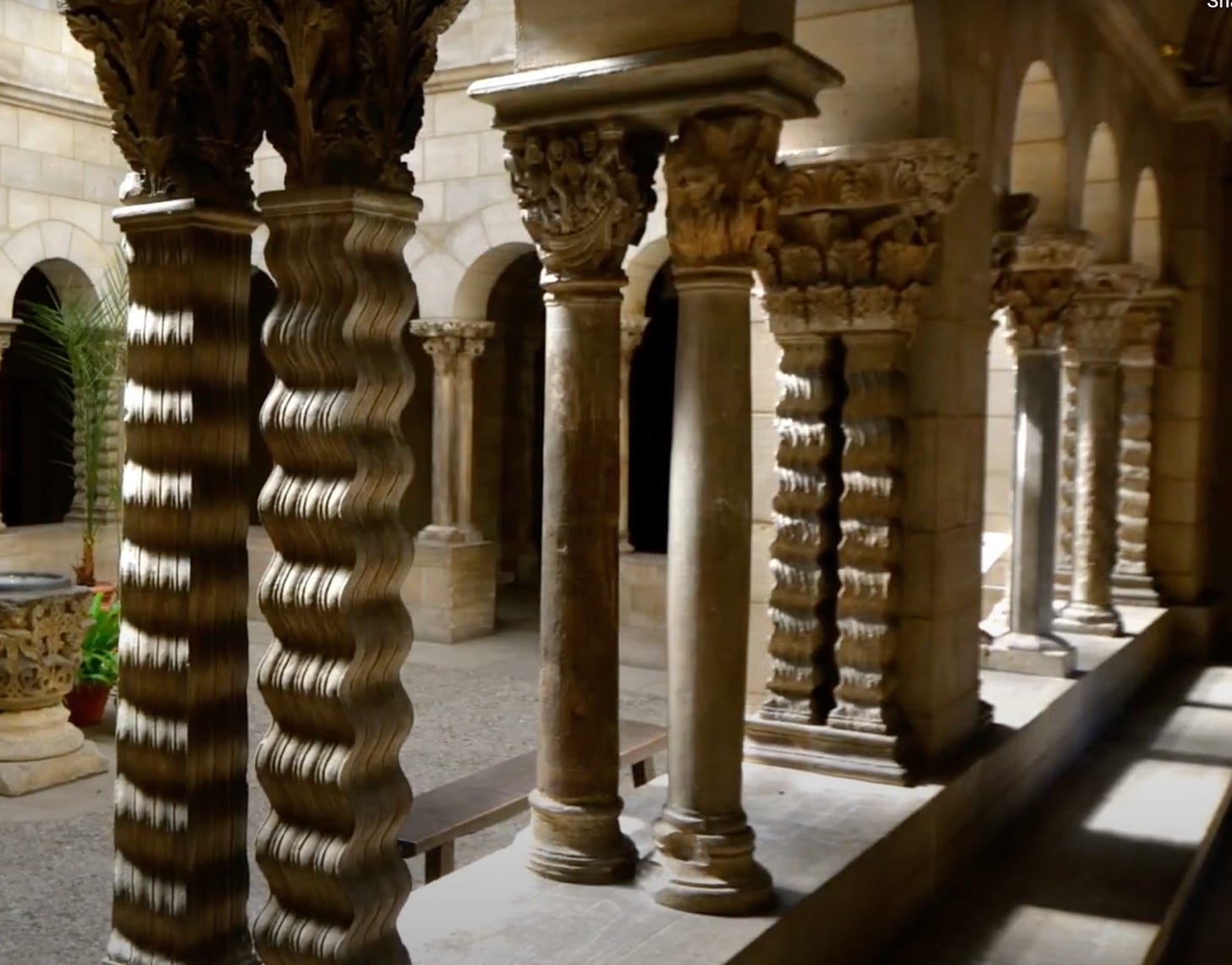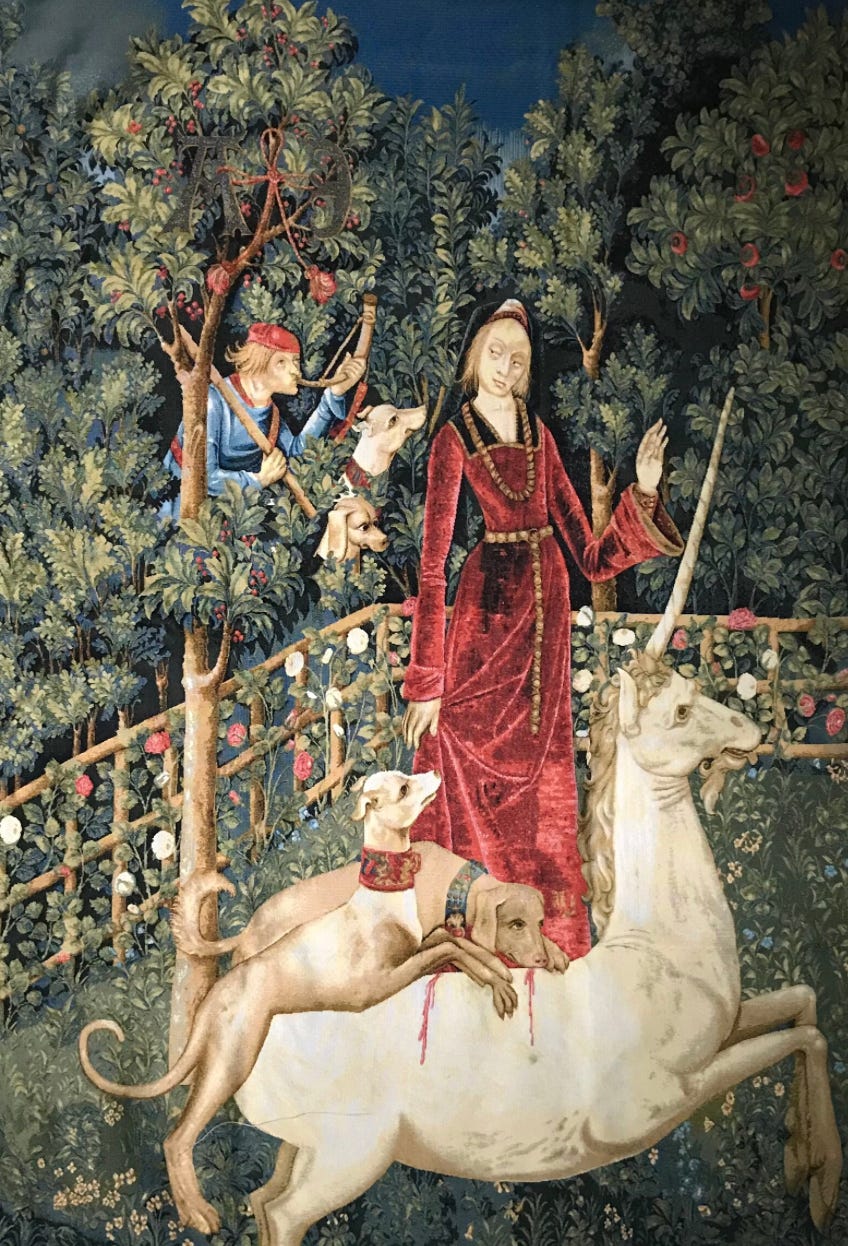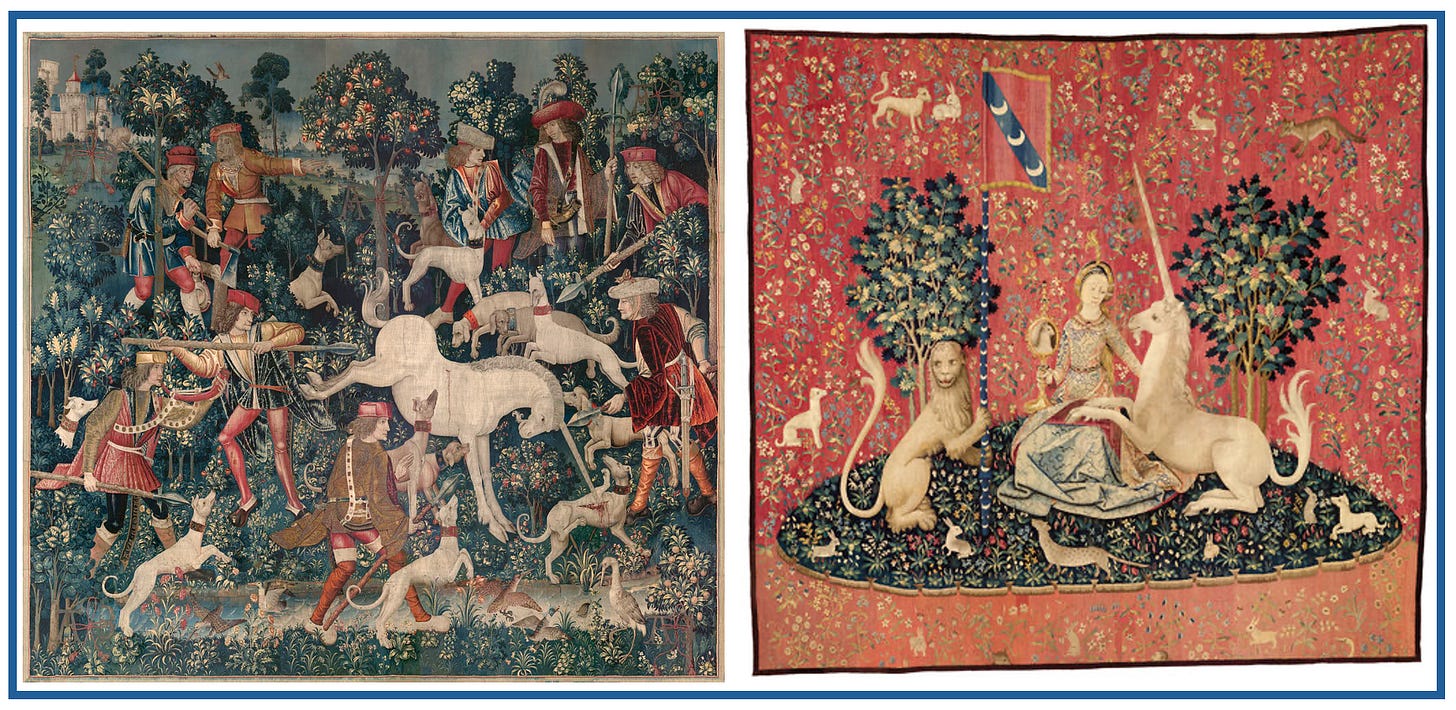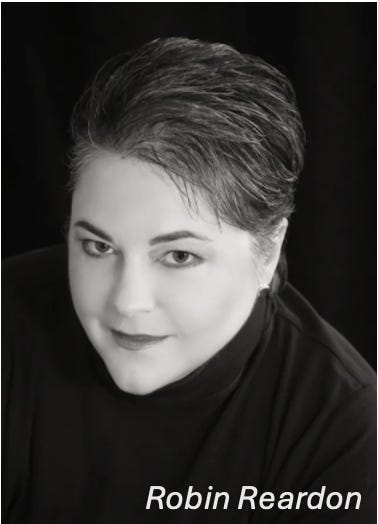The Unicorn’s Choice
Invincible love
In New York City there is a branch of the Metropolitan Museum of Art known as The Cloisters. A gem of Manhattan, it consists of parts of five medieval European abbeys reconstructed through the initial efforts of George Grey Barnard and then relocated by John D. Rockefeller, onto land he donated on the Hudson River, now Fort Tryon Park. Rockefeller also bought acres of land across the river to ensure that the view would always be as natural as possible—nothing like you’d see anywhere else on the island.
You enter into what feels like a collection of hallowed spaces. You’re not alone, but all you hear around you are near-whispers that echo slightly. Everything feels holy, although nothing here is associated with a house of God any longer.
If you continue past the collection of medieval sacred art and worldly artifacts, through the medieval garden surrounded by the cloisters—covered walkways where, once, monks would have meditated—through more stone rooms with more artifacts, you’ll be led inexorably to a large, stone-walled room. Here, on the walls all around you, dwell unicorn tapestries.
These are not the unicorns one might find among a youngster’s stuffed animals, not horse shapes with fluffy pink manes or rainbow tails or horns twisted with gold thread. The unicorn tapestries show flesh-and-blood creatures of pure white that are imbued with something divine, something other-worldly.
Some of these ancient artworks are huge. Some are smaller. On the dark backgrounds of all of them are planted tiny nosegays of violets, daisies, and other small botanicals. There are small animals: rabbits, lambs. As you move from one tapestry to the next, it’s clear they have not been treated well throughout the centuries. Some are obviously fragments of what would originally have been larger works. Each one tells a different part of the unicorn’s story. But there is one in particular that cuts to the heart of the tale.
Within a wooden enclosure, upon whose railings roses ramble, stands an apparent maiden. The maiden represents the purity and virginity that is the only effective bait for the unicorn before her. But her gaze is not on the trusting creature. Look closely. Her expression is not that of a demure maiden, but that of a cunning conspirator.
Follow the line of her gaze and you’ll see she looks over her shoulder, where a man blowing a hunting horn emerges from the woods, his hunting dogs beside him. Look more closely still and you’ll see where a dog sinks its teeth into the unicorn’s bloodied flesh.
Betrayal! The “maiden” has betrayed one horn for another—the spear of divinity for the dagger of sensuality.
Most of the other tapestries in this room depict further proof of mankind’s brutality, hunting and destroying the beauty and purity the savaged unicorn represents.
On the other side of the Atlantic, in Paris, there is another set of unicorn tapestries, housed in the Musée de Cluny. In contrast to the carnage, agonized suffering, and sacrifice of the New York tapestries, here are polar opposites. These images depict heavenly concepts: Beauty. Truth. Divine love. Rather than to the temporal, these call to the eternal.
The Paris and New York tapestries are two sides of the same coin, equally universal yet demonstrating the opposing realities of life. Seldom do we see these extremes played out in our lives, although mankind is capable of each of them.
In my previous post, Situational Morality: From Lot to Trump and beyond, I referred to this quote from the philosopher Alasdair MacIntyre: “The choice between the ethical and the aesthetic is not the choice between good and evil, it is the choice whether or not to choose in terms of good and evil.” Here, I want to contrast not good and evil, but love and fear.
Did you think I should have said “love and hate?” But I ask you, where does hate come from? I hold that its true source is fear. We fear what might hurt us. We fear what might take away people and things we love. And when that hurt or that theft threatens or happens, fear so often turns into hatred. So it’s common for people to fear and then hate anything that threatens the way of life they’ve known, the reality they’ve built their lives upon.
Donald Trump preys upon people’s capacity for fear. He fans its flames until the heat of that fire turns fear into hate. If you look around him at the people who rabidly support him, it’s clear that they’re fraught with fear. They fear losing the positions and wealth and power they’ve worked hard to acquire, and so they fear the power Trump has to cause the loss of those things. Whether they hate him or what he represents is immaterial. So they help him fan the flames of fear in anyone who might be in a position to vote against them, flames that burst into hatred of anything and anyone they perceive as challenging their way of life: the foreign, the immoral, the “dangerous.”
Trump isn’t the reason so many people are hateful. No; he saw its potential, and he heightened it. He enriched it.
Trump is the antithesis of the medieval unicorn. But just as the fear that he represents has appeared many times in the past and will, almost certainly, appear again in the future, the same is true of the unicorn. If we allow ourselves to use religious references, Trump and his ilk represent the Beast of Revelation. The unicorn represents our striving for good—our need, our compulsion to come to know God. And we, flawed and limited creatures that we are, can be our own worst enemies. We’re always getting distracted by things that matter very little, in comparison, but that are immediately available, obviously attainable. And we’re especially distracted by things that make us feel threatened.
The Trumps of life are very good at causing us to lose hope, or faith, in the less immediately available goal of divine love. So we betray this ultimate goal for something temporary. Something easier to acquire. Something we’ve been convinced will protect us. And every time, although the unicorn knows it will be betrayed, it also knows it will return. It doesn’t give up.
The unicorn is a magical creature. It cannot be captured by usual methods. In that tapestry fragment in The Cloisters, Donald Trump is not the hunter. He is not the ravaging dogs.
He is the maiden.
Perhaps the famous author Ian McEwan, a devout atheist (forgive the oxymoron), would not refer to what I call “divine love” as divine. But when he was interviewed for the Frontline production “Faith and Doubt at Ground Zero,” I think what he referred to is the same thing.
Paraphrasing, he pointed out that where once we would have known the dying words only of certain people at the highest echelons of society, because of what happened in September of 2001 and because technology has made it possible, we now know what “Everyman” will do and say in the face of certain death. We have countless pieces of evidence.
You would do this. I would do this. Anyone would do this. We would reach for something that can connect us to someone we love, and we will say, “I love you.”
And despite the imminent death, in fact in the very face of it, the unicorn rejoices.
You can subscribe for free to Robin Reardon Writes, though I hope you’ll consider becoming a paid subscriber. It’s not expensive, really! You’ll have access to everything I write on Substack. You’ll also have my undying gratitude.
One more thing: If you share this post, you’ll get credit for generosity, and I might get more subscribers.
I’m an inveterate observer of human nature, writing stories about understanding and connecting with each other. My primary goal is furthering acceptance of people who appear to be different from “us,” whoever that “us” might be. Check out my books on my website.










Beautifully written, Robin, and so thoughtful. So important to remember the love in the midst of the chaos.
I loved this. It's a way I've never thought of before reading. Thank you!